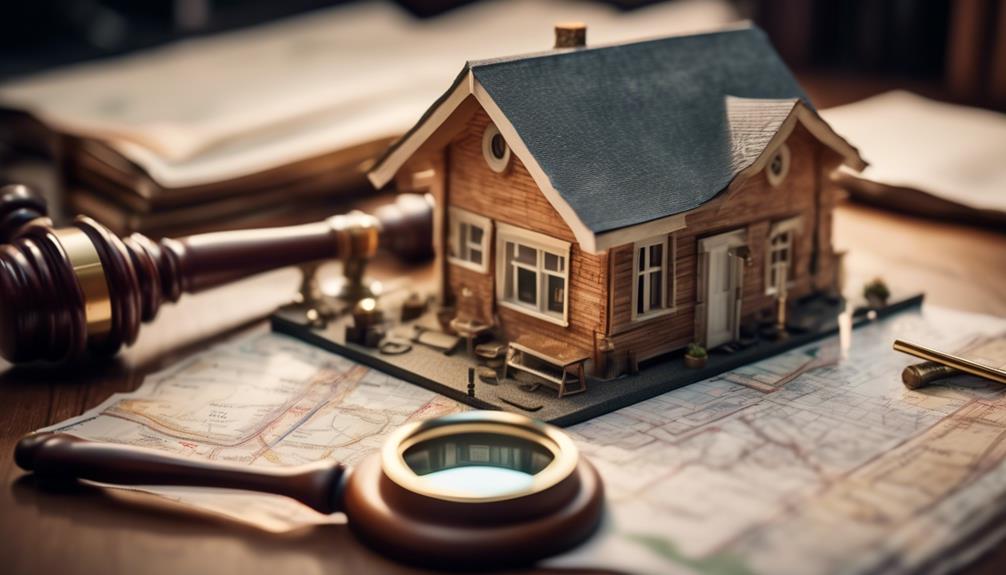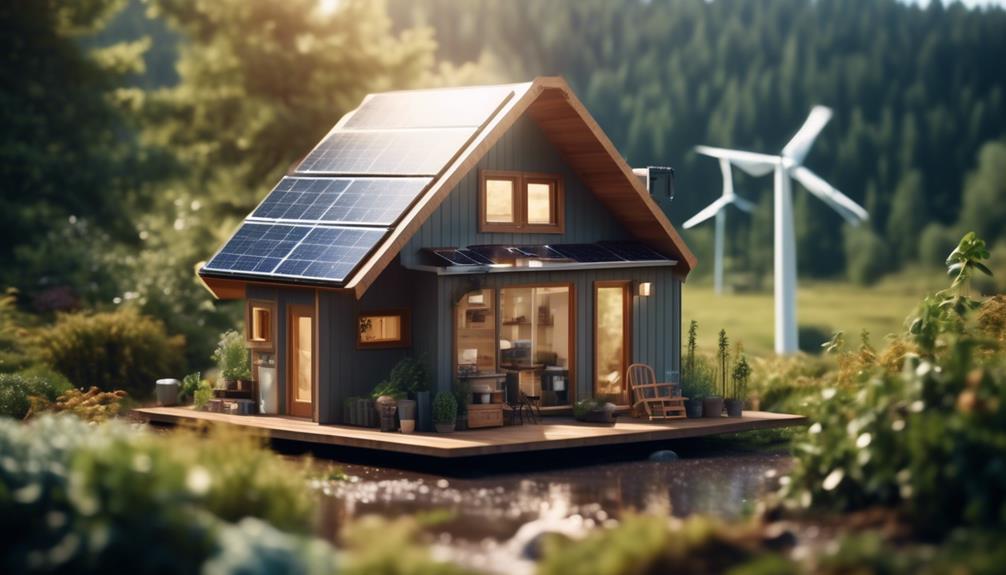Just as Thoreau ventured into the woods to live deliberately, you too may be considering the simplicity and sustainability of tiny home living. However, before you downsize your life into a few hundred square feet, you should be aware that navigating the legal landscape is more complex than fitting your belongings into a compact space.
Zoning laws, building codes, and land use regulations don't always take the unique aspects of tiny homes into account. You'll find that municipalities vary widely in their acceptance and regulation of these dwellings. As you consider making the big leap into a smaller footprint, it's crucial to understand the legalities that could significantly impact your tiny home dreams.
There's much to consider, from the implications of your home's mobility to the intricacies of living off-grid, and you'll want to ensure you're not just compliant, but also well-informed about the potential challenges ahead.
Key Takeaways
- Local zoning ordinances and building codes may not yet account for tiny homes, so strategic navigation and advocating for amendments may be necessary to find a permissible location.
- Property ownership challenges arise due to the lack of specific zoning ordinances and building codes for tiny homes, making it difficult to secure land and integrate into communities.
- Insurance for tiny homes may require specialized policies that align with the unique nature of these dwellings, taking into consideration regulations, codes, and zoning laws.
- Off-grid living regulations vary across jurisdictions, and compliance with local building codes, especially for plumbing and septic systems, is essential for establishing a legal and sustainable off-grid lifestyle.
Understanding Zoning Laws
Navigating the intricate web of zoning laws is crucial for tiny home enthusiasts to ensure their dwellings comply with local regulations. You must understand that local zoning ordinances are the foundational framework dictating land use. Zoning and building codes, often influenced by the International Residential Code (IRC), articulate the minimum size requirement and other standards your tiny home must meet. These zoning rules, enforced by local government, ensure safety and community coherence.
To innovate within this space, you're tasked with dissecting zoning regulations that may not yet account for the unique aspects of tiny homes. Local zoning may require strategic navigation to find a permissible location or to advocate for amendments to existing zoning laws.
Thorough analysis and compliance with building codes and zoning ensure your tiny abode stands on solid legal ground.
Complying With Building Codes
Ensuring your tiny home meets construction requirements, you'll need to closely adhere to local building codes that may vary significantly from national standards. As you embark on building a tiny house, it's imperative to understand that the International Residential Code (IRC) often sets the baseline for these codes, including stipulations on minimum square footage, which can affect your tiny home design.
However, local variations and amendments, especially regarding accessory dwelling units or tiny houses on wheels, could offer more flexible options.
Compliance isn't just about adhering to residential dwelling norms; it's navigating the intricate tapestry of building and zoning laws to legitimize your innovative living space. This means securing necessary permits and aligning with zoning regulations, ensuring your tiny home isn't just a novel concept but a legally recognized structure.
Property Ownership Challenges

Facing the legal labyrinth of property ownership, you'll find that the lack of specific zoning ordinances and building codes for tiny homes presents significant challenges. Here are the key points you need to consider:
- Building and Zoning Codes: Without tailored codes, your tiny home mightn't fit into existing legal frameworks, complicating compliance.
- Local Regulations: Zoning restrictions within city limits can prevent you from parking your tiny home or integrating into a tiny house community.
- Land Use: Securing land for a tiny home is fraught with legal issues, as movable tiny homes often fall under the classification of recreational vehicles, which aren't allowed in all areas.
Researching tiny house laws and actively engaging with local officials are crucial steps to navigate the property ownership challenges and allow tiny homes within your desired locale.
Insurance and Liability
When considering the leap into tiny home living, you'll need to secure appropriate insurance and liability coverage to safeguard your investment and well-being. Navigating the legal aspects of tiny houses involves understanding the diverse insurance options available.
Homeowner's insurance may not always align with the unique nature of tiny homes, which can fall under the categories of recreational vehicles (RV) or mobile homes depending on their mobility and location, such as an RV park or private land.
You must also consider regulations, codes, and zoning laws that influence insurance requirements. Specialized tiny home insurance policies exist that account for these factors, offering a blend of traditional homeowner's and RV insurance.
These tailored options ensure you're covered for accidents and injuries on your property, reflecting a proactive stance on the legal intricacies of tiny home living.
Off-Grid Living Regulations

While securing insurance for your tiny home is an important step, you'll also need to navigate the complex web of off-grid living regulations that differ vastly from one region to another. In the United States, laws vary significantly across local jurisdictions, creating a challenging landscape for tiny home enthusiasts. Here are key points you must consider:
- Building Regulations: Ensure your tiny home meets local building codes, especially for plumbing systems and potential septic systems.
- Legal Placement: Tiny homes on wheels often fall under RV park regulations, limiting where you can legally reside.
- Local Requirements: Familiarize yourself with the specific requirements for tiny homes in your desired location, as some areas may have more stringent or relaxed rules.
Analyzing these factors is crucial to establish a legal and sustainable off-grid lifestyle.
Frequently Asked Questions
What Are the Legal Obstacles of Living in a Tiny Home?
You'll encounter zoning challenges, strict building codes, and issues securing residential status. Navigating land use, parking restrictions, utility connections, property taxes, insurance policies, and community acceptance complicates your minimalist lifestyle.
Where in the US Is It Legal to Live in a Tiny HoUSe?
You'll find legal tiny house living across the US, with zoning variations and community restrictions. Urban density favors mobile regulations, while rural opportunities offer relaxed residential codes and municipal compliance. Consider legal precedents and property taxes.
Do I Need a Permit to Build a Tiny House in My Backyard in Texas?
Yes, you'll need a permit, as Texas mandates compliance with zoning regulations, building codes, and foundation requirements. Ensure your tiny house meets residential zoning, utility connections, and occupancy limits to avoid property tax and insurance issues.
What Are 3 Negative Features of a Tiny House?
You'll face downsizing challenges with minimal storage and space limitations. Less privacy is a given, and limited entertaining can dampen your social life. Remember, zoning restrictions may also complicate where you park your tiny home.
Conclusion
Navigating the intricacies of tiny home living requires diligence. Did you know that only 10% of U.S. municipalities have zoning laws inclusive of tiny houses? This statistic underlines the importance of your proactive engagement with local regulations.
You must understand the legal landscape to secure your investment and lifestyle. Ensure you're not among those caught off-guard by zoning surprises or code non-compliance.
Stay informed, stay compliant, and contribute to the growing recognition of tiny homes as a legitimate, sustainable housing option.

